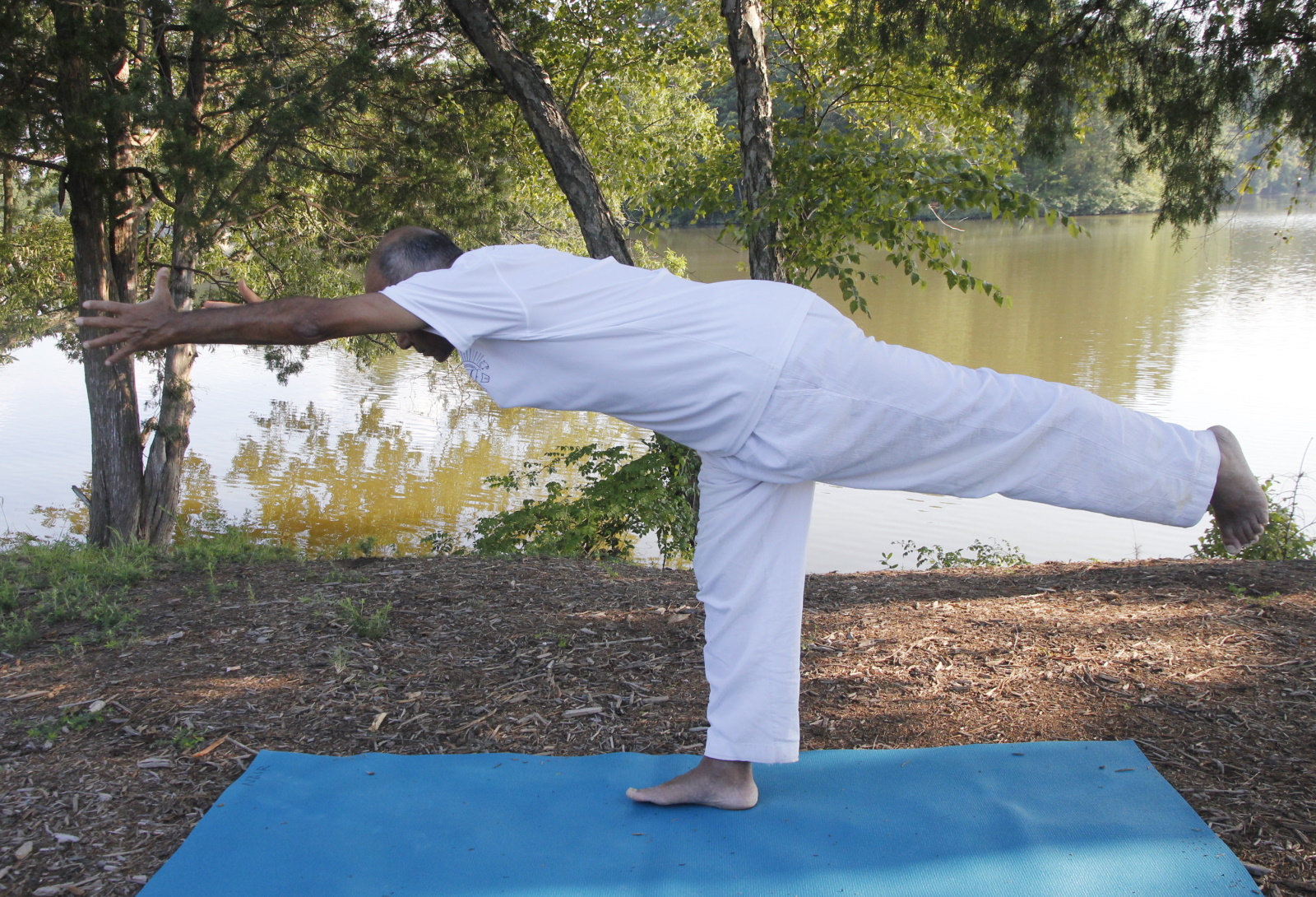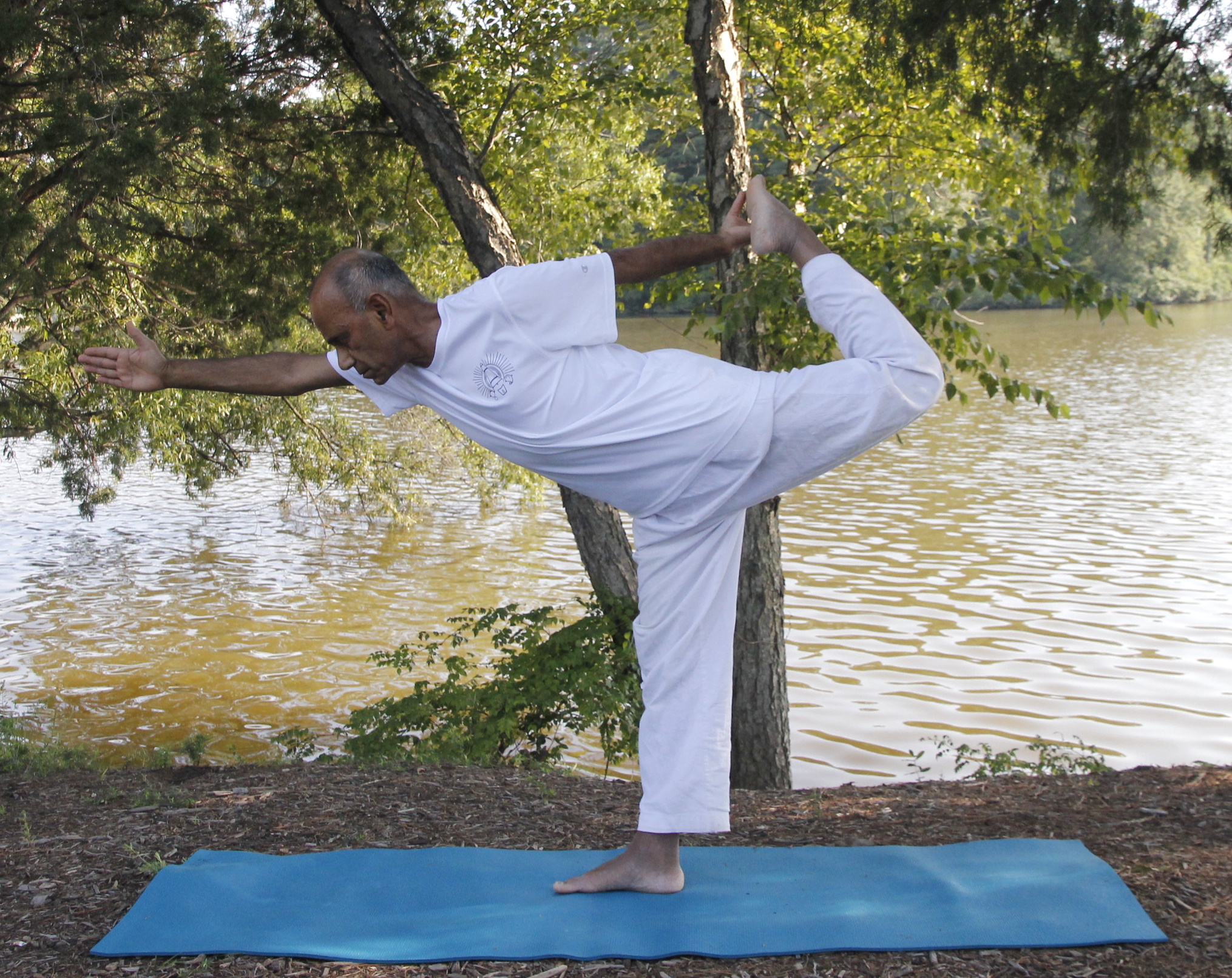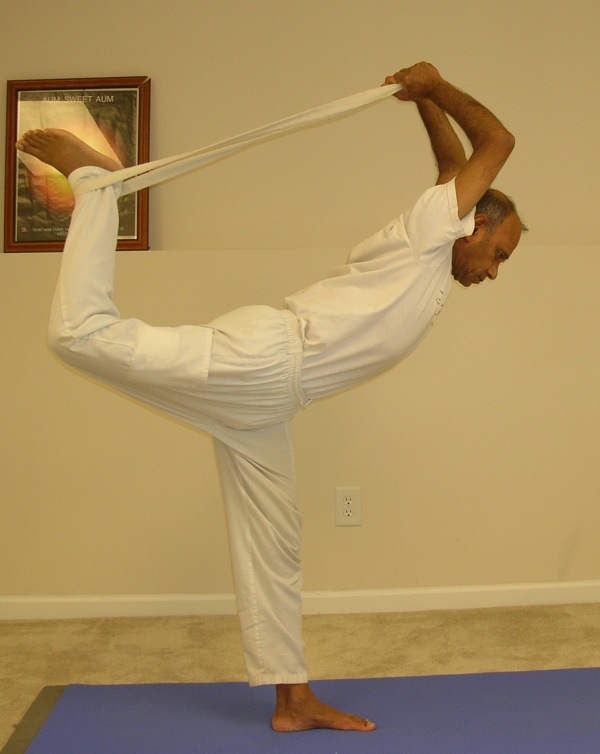
Virabhadrasana (warrior 3)
In this post, I’ll be talking about two of the standing, one-leg balancing poses – vīrabhadrāsana (Warrior 3) and naṭarājāsana (Dancer’s pose). Given the alignment, flexibility and balance required to get into and maintain these asanas, they are considered intermediate level balancing poses. As with most balancing poses, these two asanas develop strength in the legs, and physical balance. Since these asanas require the visual gaze and the mind to be totally focused to maintain balance, they also help in developing deep mental focus and concentration.
Hope you will enjoy practicing with my good friend, Maanasa, in this video sequence.
Vīrabhadrāsana (Warrior 3)
Warrior 3, along with its two siblings, Warrior 1 and Warrior 2, are some of the most commonly practiced asanas in most styles of yoga. In my own practice and the classes that I teach, I integrate the practice of Warrior poses as a part of the Surya Namaskar (Sun Salutation) sequence. However, all three variations of the Warrior pose can be practiced independently as standing poses.
Who was Vīrabhadra?
Vīrabhadra was a mythical warrior, created by Lord Shiva from the strand of his hair to fight against King Daksha. Shiva was married to Daksha’s daughter, Sati who had married Shiva against the wishes of her father. Daksha, in order to take revenge against Shiva, organized a grand yajna (a sacrificial ceremony) in which he invited all the important and not-so-important gods except Shiva. Humiliated at this insult, Sati burned herself in the sacrificial fire. On hearing about it, Shiva was enraged and created Veerabhadra who eventually fought against and destroyed Daksha and his armies.
Step-by-step
Warrior 3 with wall support

warrior 3 with wall support
In order to understand the correct position and alignment for this asana, we’ll first do it with the support of the wall. This will help us understand the perfect alignment of the hips, arms, legs and the shoulders.
- Face the wall and adjust your distance so that when you stretch the arms out, they should be straight and eventually horizontal. You should be able to place the palms flat against the wall.
- Keeping the left leg straight on the ground, start by lifting the right leg behind. Keep the right leg straight with the toes pointing back.
- The key factor here is the alignment of the hips. Try to roll the right hip down toward the floor and then lift the right leg up so that both hips are exactly at the same height. Keep the left leg which is supporting the body weight perfectly straight and vertical. The whole body eventually comes into the shape of the capital letter “T. The body becomes completely parallel to the floor.
- Try to stay in the final post for about 6-8 breaths or as long as comfortable.
- Slowly release the pose and come down, rest for a moment and take a couple of easy breaths.
- Repeat the above steps with the other leg supporting the body. When you are done with both sides, come back to the mat and relax for a moment.
Warrior 3 without wall support
Now that the concept of hip alignment is understood, we’ll repeat the same asana on the mat without the wall support.
- Place one foot slightly in front the other foot. Raise the arms up vertical and begin to bend forward. Continue to lift the back leg up and lower the torso down. As mentioned above, both the hips are aligned at the same height. If the right leg is up, mentally make an effort to roll the right hip down so that the hips are aligned. Eventually the body comes into the shape of the capital letter T.
- Maintain the final position for about 6-8 breaths, or as long as comfortable. Then release the pose and relax for a few moments.
- Repeat the above steps with the other leg.
- Relax for a few moments

Natarajasana (dancer’s pose)
naṭarājāsana (Dancer’s pose)
naṭarāja (nata means a dancer and raja means the king or the lord), king-dancer, is the name of Lord Shiva (one of the trinity of Hindu gods – Shiva, Vishnu, and Brhma). In addition to being the dissolver of the universe, Shiva was also the Lord of dance and created over a hundred dance moves. naṭarājāsana – नटराजासन – is dedicated to Lord Shiva.
naṭarājāsana is an elegant-looking balancing pose which also involves a great stretch for the upper thighs (quads), ankles, spine, and the shoulders. Getting into the pose involves a beautiful interplay of body form and smooth movement. The final position gives a great feeling of grace, stability, balance, and openness of the heart.
Step-by-step

Natarajasana (dancer’s pose)
- Come to a comfortable standing position with the feet together and arms alongside the body. Inhale, shift your weight onto your right foot, and, bending the left knee, lift your left foot toward your left buttock. Pull the right knee cap up to keep the standing leg straight and strong.
- Reach back with your left hand and grasp the inside of the left foot.
- Stretch the right arm in front and keep it parallel to the floor throughout the pose
- Begin to lift your left foot up, and back by pushing into the hand with the foot, away from your torso. Try to extend the left thigh behind you and bring it parallel to the floor.
- Raise the left foot up behind you as high as you comfortably can. At the same time make the effort to bend forward gently until you can bring the torso parallel to the floor.
- While in the final pose, fix your gaze at a spot in front to help you with maintaining balance and stability in the pose. Make the effort to keep both the buttocks at the same level. Stay in the pose for about six to eight breaths
- To come out of the pose, slowly release the left foot and the right arm down and come back to the original standing position.
- Repeat the above steps on the other side
naṭarājāsana Variation (with strap)
- In order to provide additional stretch for the shoulders, use a strap to hook the left ankle behind you and hold the strap from above your head. Hold the strap as close to the foot as comfortable.
- Begin to lift your left foot up, and back by pressing into the strap with the foot, away from your torso. Try to extend the left thigh behind you and bring it parallel to the floor.
- Stretch the shoulders up and back and keep bending forward slightly at the same time. Try to stretch the elbows straight, if comfortable.
- While in the final pose, fix your gaze at a spot in front to help with balance. Make the effort to keep both the buttocks at the same level. Try to maintain the final pose for about six to eight breaths
- To come out of the pose, slowly release the left foot and the arms down, release the strap, and come back to the original standing position.
- Repeat the above steps on the other side
Very good description. It helped a lot. Thanks
Thanks for your kind note. I am glad you find it helpful.